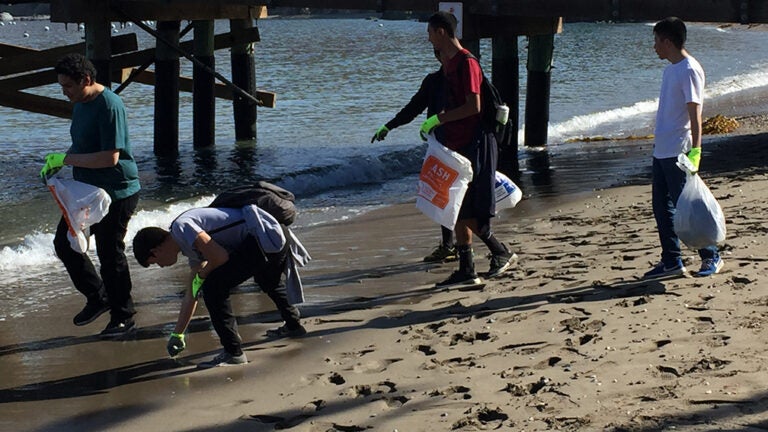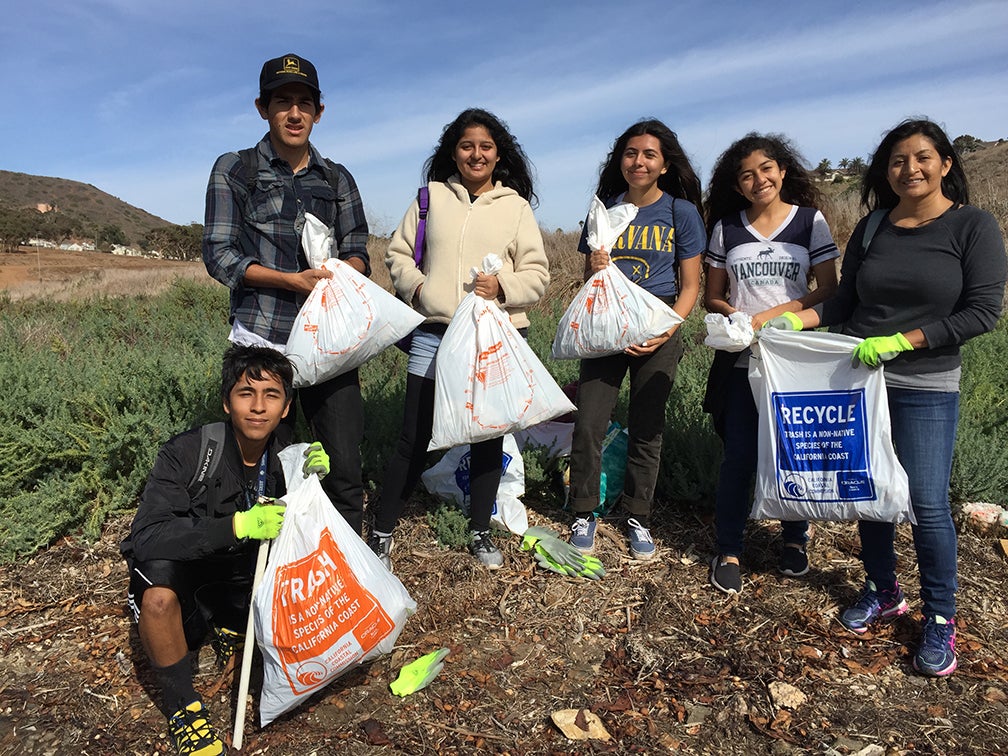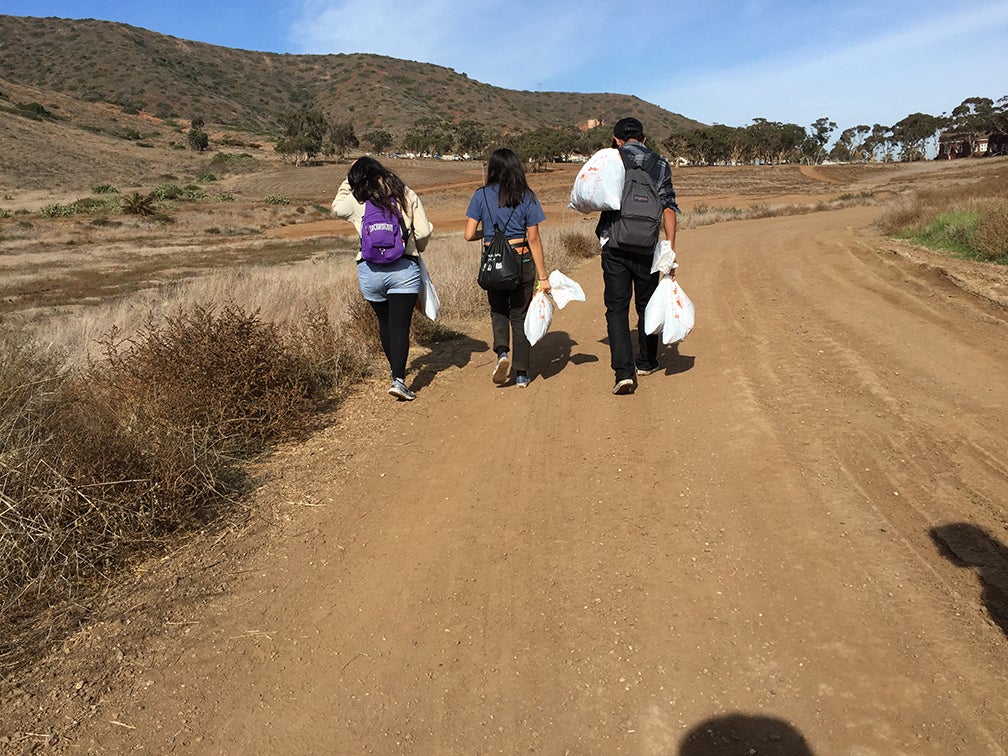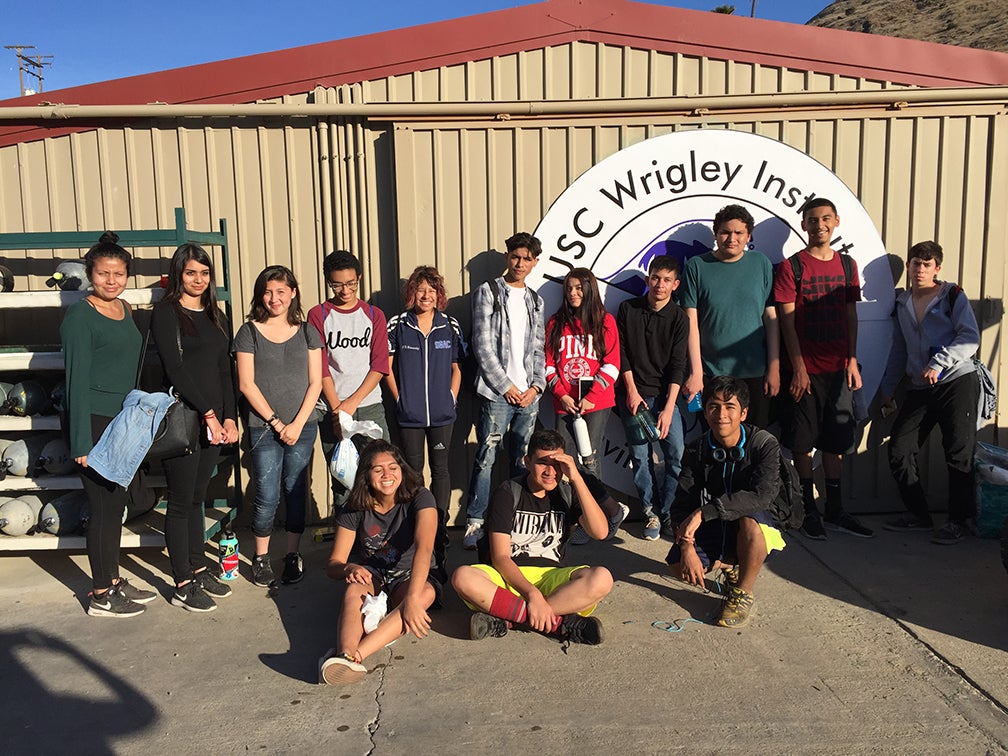
Summer Marine Lab Student Ignites Passion for Coastal Cleanups
Each summer, students come from all over the county to be part of the High School Summer Marine Science Lab Experience on Catalina Island, a program held at USC’s Wrigley Institute for Environmental Studies in partnership with the Center for Dark Energy Biosphere Investigations. Over the course of a week, students conduct their own research projects, learn about careers in marine science, build their own remotely operated vehicles (ROVs), snorkel, kayak, and explore the marine protected areas around the island.

We also ensure that the experience has a lasting impact far beyond the summer. Students must take what they have learned to plan and implement an outreach project within their communities once they get home. Senior Jessy Gayosso took this to heart. He recruited students from his own high school in South Gate and other local students from the summer lab experience and formed the Environmental Clean Up Club. The students have been conducting regular clean ups in their communities, preventing debris from getting to the ocean through the watershed. They use profits from recyclable materials to purchase supplies to conduct the clean ups.
Jessy recently contacted me to see if he could bring his club out to Catalina to help clean up, and to provide a chance for more students to experience time on the ocean and at Catalina. For two days last week, the students (from five high schools and one of the local community colleges) joined together to extend their community actions to Catalina Island. Jessy, Johanna, Jessica and Nicole from the summer lab experience returned with the group and marveled at the differences since the summer at the Wrigley Institute and across the island. Most of the participants were new to Catalina and found the island was far different from what they imagined. The students were surprised at how almost all of the debris they cleaned up were tiny, except those that clearly came from boats, and came to the conclusion that the smaller particles at Cat Harbor ended up there after being broken down while travelling in the current. Most debris were plastics. There were a tremendous number of ribbons tied to balloons that had been released that we all worked out of the natural debris. The team removed all of the debris collected.
At the end of the day, students were thankful for the opportunity to come to the island and help clean up. I find myself thankful for their passion, inspiration and dedication- they gave their own time on their day off to want to make a difference in their world. We all appreciate the parents who brought them to meet up at 5:45 am and picked them up again almost 12 hours later.

